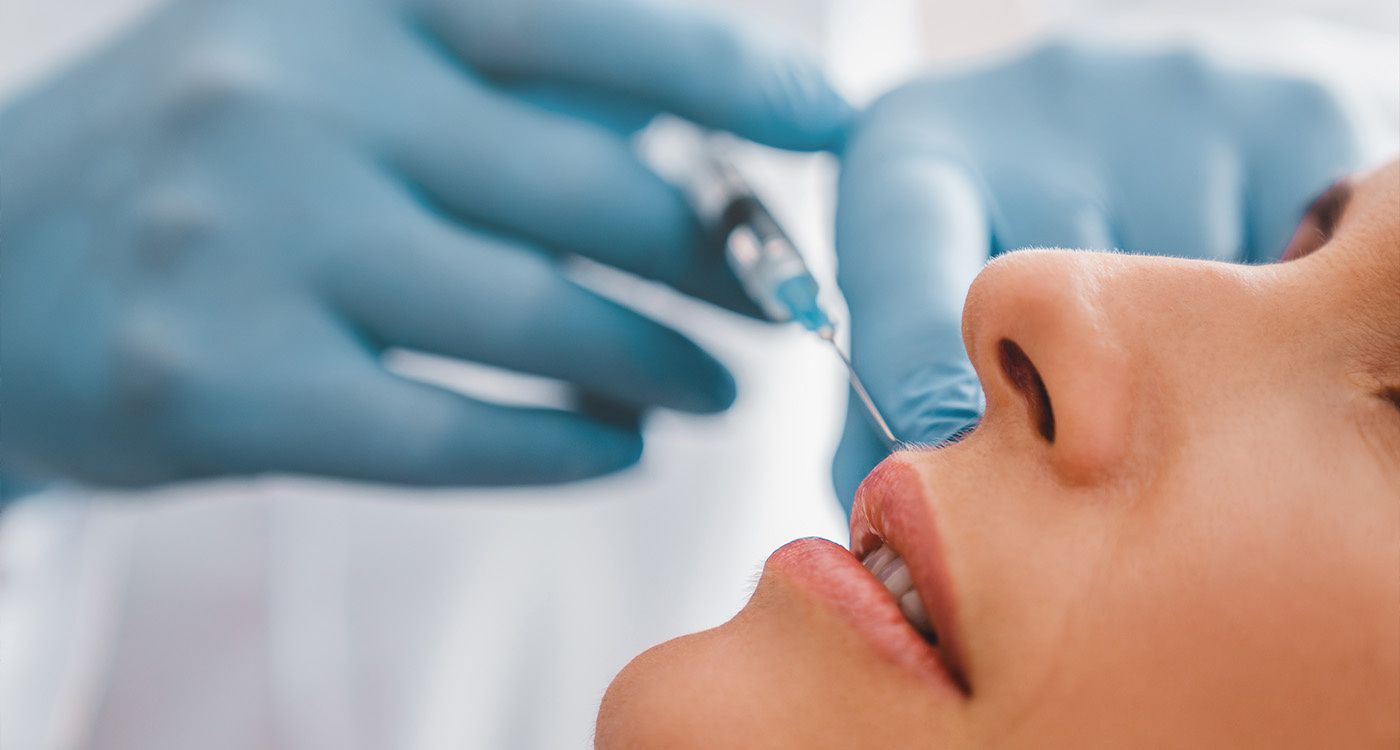- Home
- Highlights
- Hyaluronic Acid: The Art of Volume… and Excess

©Shutterstock
Volumizing, hydrating, natural: hyaluronic acid has become the star of facial fillers. But behind its popularity lie potential complications: delayed reactions, migration, granulomas and product choice… In Lebanon, an early surge in demand has also been reported by Professor Roland Tomb, Honorary Dean of the Faculty of Medicine at Saint Joseph University of Beirut and a dermatologist-allergist at Hôtel-Dieu de France.
Restoring volume, smoothing grooves, plumping lips and hydrating the skin, hyaluronic acid (HA) is now a mainstay in aesthetic medicine. Its popularity is well deserved: it is a naturally occurring molecule in the body, well tolerated and biodegradable, acting as a water-retaining cushion. Injected as a gel, it fills hollows, sculpts the cheekbones or plumps the lips, all while remaining reversible thanks to hyaluronidase, an enzyme that can dissolve HA if the result is unsatisfactory or a complication occurs.
One of HA’s greatest advantages is precisely that reversibility. If the outcome is disappointing, or a lump or irregularity appears, a hyaluronidase injection can remove the gel within minutes. But this “rescue” carries some risks: although highly useful, hyaluronidase may trigger allergies, swelling, bruising, and can occasionally dissolve the tissue’s natural hyaluronic acid, leaving a hollow or uneven appearance. Its use should therefore remain strictly medical, in the hands of skilled professionals only.
Unlike Botox, HA does not paralyze – it fills, shapes and restores volume and suppleness to facial features. The secret lies in the product’s density, which varies depending on the area being treated. A fluid, soft gel is used for the lips or fine lines; firmer gels for the cheekbones, jawline or chin; and highly specialized formulations for under-eye hollows or the tear trough. Using the wrong density can lead to migration, nodules and an unnatural result.
High-Risk Areas and Potential Complications
The under-eye area, once highly sought after, is now approached with great caution. Experts know that the skin there is thin, the vascular network dense, and that even perfectly injected HA can cause persistent swelling, the Tyndall effect (a bluish tint under the skin), chronic puffiness or gel migration. Vascular complications, including necrosis or even blindness, and lymphatic issues are serious concerns. As a result, a growing number of practitioners now limit or avoid under-eye filler injections in favor of alternative techniques, such as PRP or lasers, which do not add volume but instead stimulate skin regeneration.
Contrary to popular belief, injected HA does not always disappear completely. Most of the gel is absorbed within 6 to 24 months, but clinical cases show that some residues can persist for years, sometimes up to a decade. These remnants may remain invisible or, when triggered by an infection, vaccination or immune stress, may cause inflammation, form nodules, or migrate away from the injection site.
These nodules, sometimes called granulomas, are the result of a chronic immune response to a foreign substance. They appear as firm, movable bumps under the skin that may or may not be painful. Granulomas are more likely to occur in delicate areas, such as the under-eyes or lips, where even minor irregularities are visible. They may remain subtle or flare up years later, triggered by immune system activity.
Lebanon’s Overload and Overuse
In Lebanon, the trend has surged. With prices ranging from $250 to $400 per syringe, fillers have become accessible to very young people, often starting in their twenties. Social media influence, the obsession with glamour and the pursuit of a “perfect” face push many Lebanese women to have multiple sessions, overfill the cheekbones, lips or jawline, and neglect proper follow-up or fail to choose the right practitioner.
The result: swollen faces, uniform features and rising complications. Overdoing it comes at a high cost: persistent swelling, gel migration, nodules and overcorrections that are not always easy to reverse. Experienced practitioners stress that true success relies on subtlety, anatomical expertise and the ability to refuse unnecessary procedures.
Hyaluronic acid has transformed aesthetic medicine, but its safety relies on the practitioner’s experience, the quality of the product, careful technique and moderation. When it comes to injections, achieving the best results requires sound judgment and sometimes the wisdom to say no.
FAQ – Understanding the Technical Details
Can the same hyaluronic acid be used for every area?
No. Each area requires a gel with the appropriate density: more fluid for the lips or under-eye hollows, firmer for deeper sculpting. Injecting a gel that is too dense in a mobile area increases the risk of nodules or migration, or unnatural results.
Is hyaluronidase risk-free?
No. While highly effective for dissolving HA in case of a problem, it can cause allergies, swelling, bruising, and may sometimes dissolve the tissue’s natural HA. Only an experienced physician should administer it.
How long does HA last?
For most people, 6 to 24 months, but fragments can persist for years, making long-term follow-up important, especially in cases of repeated injections.
Granulomas: A Nodule to Monitor
A granuloma is an inflammatory nodule that can appear months or even years after a hyaluronic acid (HA) injection. Well known to dermatologists, this phenomenon occurs when the immune system isolates filler residues it was unable to eliminate. It is a chronic foreign-body reaction: the granuloma forms a small, firm, sometimes movable bump under the skin, often painless but capable of becoming red or painful during an inflammatory flare.
Granulomas are more common in areas with thin skin, such as under the eyes or lips, and may be triggered by immune stress or repeated injections. Occasionally, these nodules can migrate away from the injection site, complicating diagnosis.
Most granulomas remain subtle, but some can be aesthetically bothersome or uncomfortable. Management relies on monitoring, corticosteroid injections, dissolution with hyaluronidase or, in rare cases, surgical intervention. This highlights the importance of long-term follow-up and having procedures performed by a qualified practitioner.
Read more




Comments